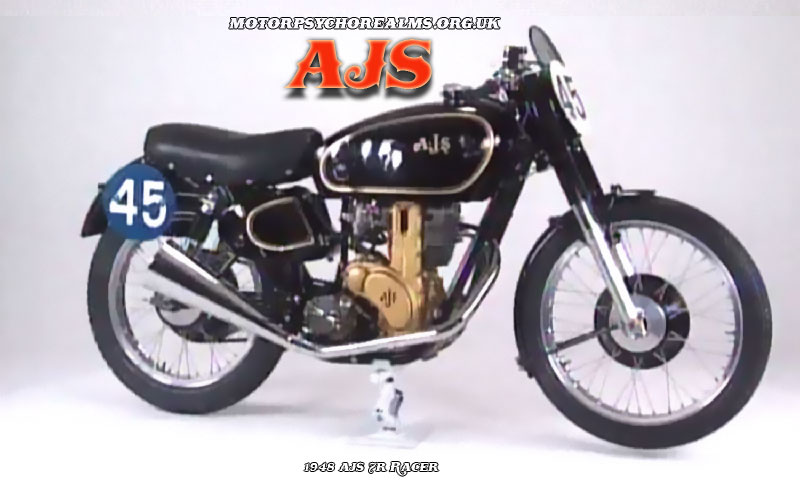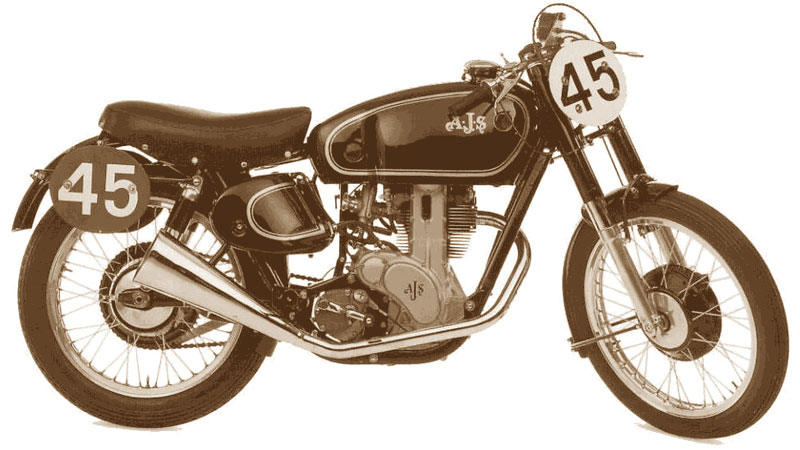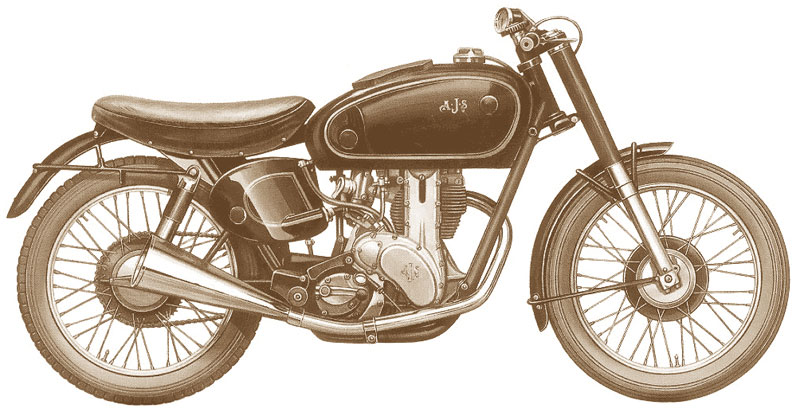AJS Motorcycles

AJS 7R Racer
AJS was the name used for cars and motorcycles made by the Wolverhampton, England company A. J. Stevens & Co. Ltd, from 1909 to 1931, by then holding 117 motorcycle world records, and after the firm was sold the name continued to be used by Matchless, Associated Motorcycles and Norton-Villiers on four stroke motorcycles till 1969, and since the names resale in 1974, on small capacity two strokes.
In 1938 AJS became part of a group called Associated Motorcycles, formed by the Colliers as a management company for its various interests. After this Matchless and AJS shared models using different badging.
Under AMC the AJS badge may have been put on the "bread and butter" Matchless motorcycles, but the Colliers were mindful of the AJS racing heritage, and used the name on some innovative racing machinery. These racing bikes kept the AJS name alive.
In 1935, at the Olympia Show, an air cooled sohc AJS 50? V4 was shown, a fully equipped road going version, which did not make it into production. In 1936 Harold Daniell rode a supercharged race version in the Isle of Man Senior TT, but despite its high top speed, it lacked acceleration.
In 1939 a water-cooled and supercharged version of the 495 cc AJS V4 was built to compete against the supercharged BMWs then dominating racing. In 1939 the dry sump V4 was the first bike to lap the Ulster Grand Prix course at over 100 mph. It weighed 405 lb. and its top speed was 135 mph. Then World War II intervened.
At the end of the 40s and start of the 50s, the AJS Porcupine, a 500 cc forward facing parallel twin, and the AJS 7R (32 bhp, 350 cc OHC single) were being raced alongside their AMC stablemates the Matchless G50 (effectively a 500 cc 7R) and by 1951, the Matchless G45 (a 500 cc vertical twin). The AJS Porcupine had been designed for supercharging, before the rules changed banning supercharged racing motorcycles, but even so, Les Graham won the 1949 World Championship on an unsupercharged AJS E90 500 cc Porcupine.

AJS 7r 1948
In 1951 AJS development engineer Ike Hatch developed a 75.5 mm bore x 78 mm stroke, three valve head version of the 7R making 36 bhp. It was called the AJS 7R3, and was Ike's response to the Italian multi-cylinder racers. They did well enough in their first year, not as well the second. For 1954 Jack Williams, the works team manager, developed the bike further, lowering the engine in the frame, and making some tuning changes that gave 40 bhp @ 7800 rpm. It immediately won the first two rounds of the World Championship and took first at the Isle of Man TT. These were factory specials, but one has survived, and a second has been reconstructed from spares.

AJS 7r 350 1949
AMC withdrew from the world of works and one-off road racing at the end of the 1954, with the death of Ike Hatch, and in the face of fierce competition from the other European bikes. After this AJS made a production version of the standard two valve AJS 7R, for privateers. In 1954 Norton was also moved to the Plumstead works.
With the G15 line, AMC had built on the merits of the G12 but there were numerous changes to frame, forks, swinging arm, primary chaincase, transmission, cycle parts and lubrication system. The P11 was the last line of bikes with bonds to AMC. It used a modified G85CS frame but there were stronger forks, completely new cycle parts (making some was rather costly), altered lubrication and modified primary chaincases, to mention a few.
The G15 series was offered as 3 brands: Matchless G15 comprising G15Mk2, G15CS and G15CSR; AJS Model 33 comprising M33Mk2, M33CS and M33CSR; and last not least Norton N15CS (no Norton-branded roadster made as it would compete against the Atlas). The G15 series was produced from 1963 to 1969. They were initially for export only, but by 1965 these models were available in UK and Europe too.
Associated Motorcycles and the AJS name eventually ended up with Norton-Villiers in 1966. In late 1968 the Plumstead works at Burrage Grove, where engines from the Wolverhampton plant and frames from the Manchester plant were assembled into complete machines, were presented with a Greater London Council compulsory purchase order. The Plumstead works closed in July 1969. It is believed that production of the G15 series was halted late in 1968 (model year '69) with unsold samples on offer through 1969. The AJS Model 33 was the last AJS badged four stroke produced.
from Wikipedia licensed under the GNU Free Documentation License

